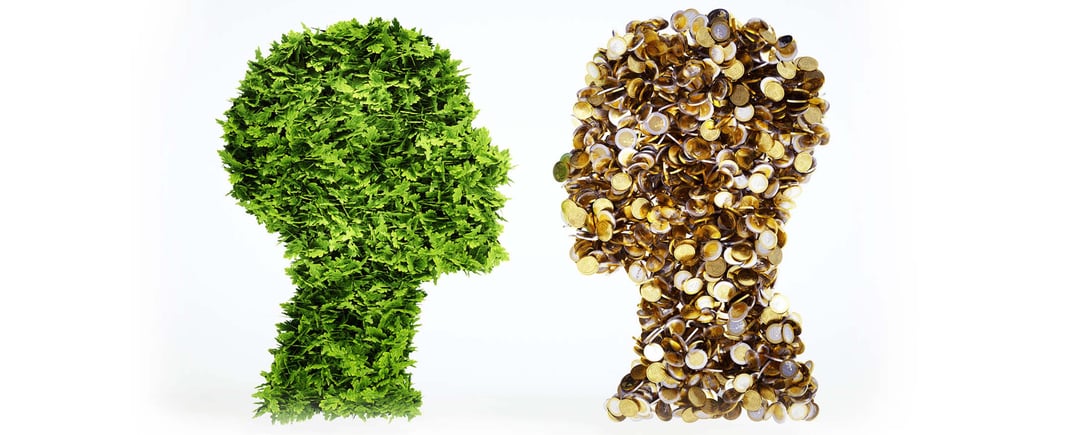At TenCate Protective Fabrics, we have a duty to help our industry reduce its ecological impact. When it comes to sustainable protective clothing, our mission is to create fabrics that are not just environmentally-friendly, but have added long-lasting benefits.
Because sustainable materials often come with a higher price tag, they will only be fully accepted by the market when they have added benefits on top of being sustainable.
‘Green subsidies’ are often used to push in-market adoption of sustainable materials. However, this is just a temporary solution, and it is the added value that a sustainable product can offer that will make it the preferred choice in the long-term.
What are the real-world advantages of switching to sustainable alternatives?
Within other industries, there are examples where sustainable alternatives have become the top choice, not only from an environmental perspective but an economic one too. Take LED lighting, for example. LED lights are more expensive than traditional incandescent bulbs, but the initial investment delivers far-reaching positive results:
- Longevity: they have a lifetime of 100,000 hours, 133 times longer than a typical incandescent bulb, thus lessening the frequency at which new bulbs must be purchased
- Efficiency: they consume 85-90% less electricity than incandescents; plus they produce virtually no heat, lowering cooling costs
- Environmental impact: their longer lifespan means that choosing one LED bulb eliminates the material and production of 25 incandescent bulbs. Plus they’re 100% recyclable, which can reduce carbon footprint by a third
What about sustainability in the protective clothing industry?
With an example like LED lighting, it’s clear to see how the initial higher cost pays dividends further down the line. But what about protective clothing - how can it be both sustainable and economically viable?
A good case study is cotton versus lyocell. Cotton is one of the most commonly used—and least expensive—fibres in the world. It offers good comfort, durability and moisture management. However, its production process contributes heavily to global pesticide use. On the other hand, lyocell allows suppliers to produce fabrics with a lower ecological footprint. Its environmental benefits are undeniable:
- Produced in a closed-loop process that transforms wood pulp into bio-cellulose fibres, where more than 99% of the solvent is recovered and reused
- Harvested from natural forests and sustainably sourced plantations without the use of chemical pesticides
- Optimized water footprint – the water scarcity impact of lyocell fibres is reduced from 994 L/kg cotton fibre to 46L/kg Lyocell fibre – and energy-efficient laundry processes
What does this mean for me as a health and safety manager?
As a health and safety manager, your employees’ wellbeing will understandably be your top priority. You may be wondering what the long-term benefits are of switching from cotton to lyocell, beyond ecological impact. The good news is that it ticks several boxes when it comes to wearer experience and durability:
- Moisture management: lyocell absorbs 50% more moisture than cotton, and more effectively evaporates moisture, resulting in a dryer and more comfortable feel
- Skin contact: cotton fibres have impurities, which can affect how they feel when the come in contact with skin. Lyocell fibres have a smoother surface, allowing for a more pleasant experience
- Durability: lyocell fibres have high mechanical properties and excellent colour retention capabilities, even after repeated industrial laundering
Beyond sustainability: getting the maximum value out of your protective clothing
In the modern workplace, we believe that sustainable products without added value will not fly. That’s why, in our choice of materials, we always aim to strike the perfect balance between workwear that is kind to the environment, comfortable and effective for the wearer, and provides maximum value for money over the long-term. Examples like lyocell prove that sustainability, comfort and value can absolutely go hand-in-hand when it comes to protective clothing.
We have embedded design for the environment as a red thread into our product development process to create high-quality, comfortable protective workwear fabrics with the smallest environmental footprint possible, thus enabling professionals to be great at what they do.
For more information about lyocell, have a read of our previous blog The Rise of Lyocell in Workwear.





.png?width=399&name=Risk%20management%20for%20PPE%20clothing%20in%20the%20EV%20and%20battery%20industries%20(5).png)
